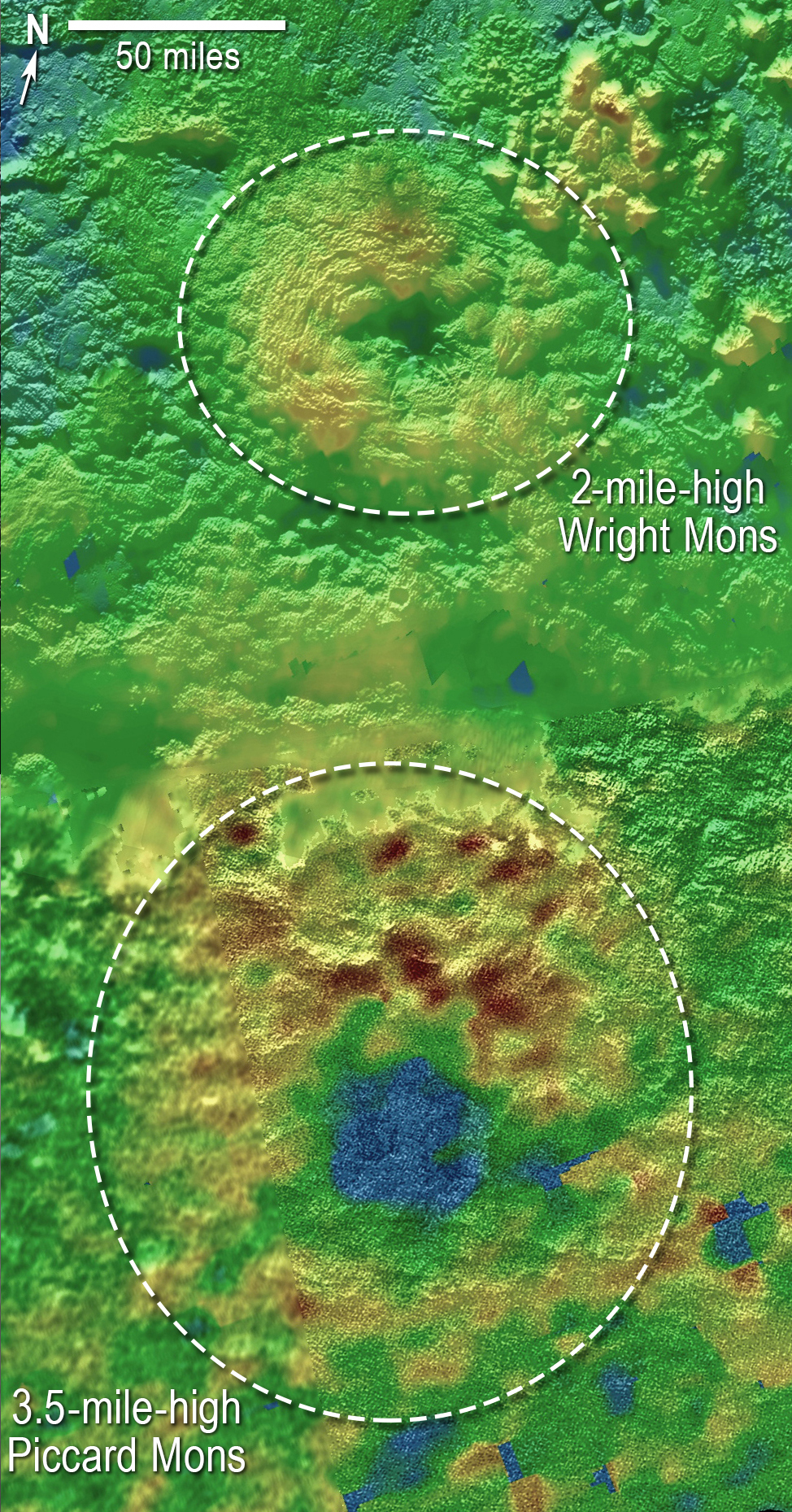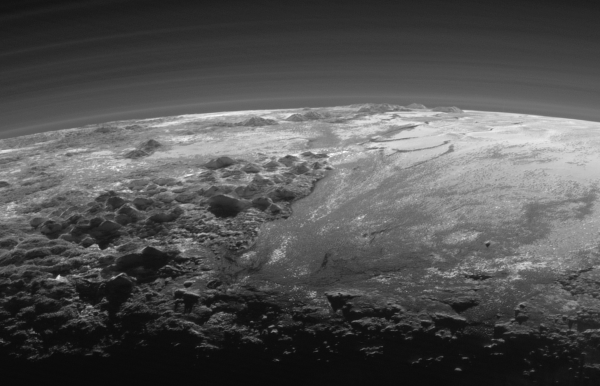
New Horizons geologists combined images of Pluto’s surface to make 3-D maps that indicate two of Pluto’s most distinctive mountains could be cryovolcanoes – ice volcanoes that may have been active in the recent geological past.
The findings were among the more than 50 discoveries being presented by NASA’s New Horizons mission researchers this week’s 47th Annual Meeting of the American Astronomical Society’s (AAS) Division for Planetary Sciences in National Harbor, Maryland which began yesterday (November 9, 2015).
The two cryovolcano candidates are large features measuring tens of miles or kilometers across and several miles or kilometers high.
Oliver White is a New Horizons postdoctoral researcher at NASA’s Ames Research Center in Moffett Field, California. White said:
These are big mountains with a large hole in their summit, and on Earth that generally means one thing – a volcano.
While their appearance is similar to volcanoes on Earth that spew molten rock, ice volcanoes on Pluto are expected to emit a somewhat melted slurry of substances such as water ice, nitrogen, ammonia, or methane, say scientists. White said:
If they are volcanic, then the summit depression would likely have formed via collapse as material is erupted from underneath. The strange hummocky texture of the mountain flanks may represent volcanic flows of some sort that have traveled down from the summit region and onto the plains beyond, but why they are hummocky, and what they are made of, we don’t yet know.
If Pluto proves to have volcanoes, it will provide an important new clue to its geologic and atmospheric evolution. Jeffrey Moore is New Horizons Geology, Geophysics and Imaging team leader. Moore said:
After all, nothing like this has been seen in the deep outer solar system.

Enjoying EarthSky? Sign up for our free daily newsletter today!
Bottom line: On November 9, 2015 New Horizons mission geologists presented images of Pluto’s surface that indicate two of Pluto’s most distinctive mountains could be cryovolcanoes – ice volcanoes that may have been active in the recent geological past. The research was presented at the American Astronomical Society’s (AAS) Division for Planetary Sciences in National Harbor, Maryland











